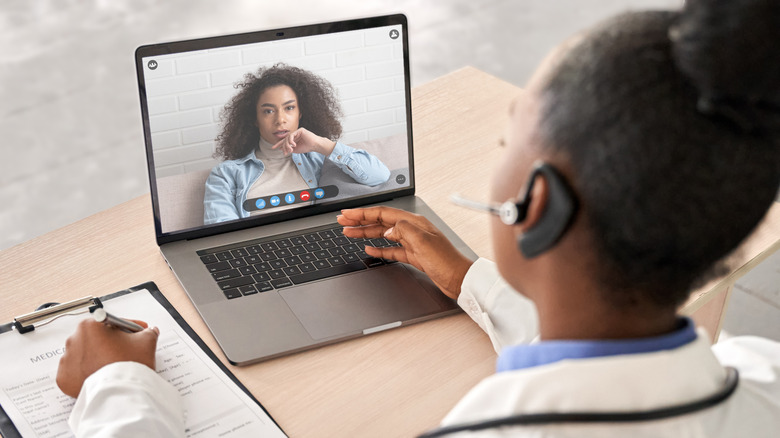How Telehealth Is Improving Access To Primary Care For Vulnerable Populations
Telehealth is helping to close the racial gap in access to primary medical care, according to a new study published in Telemedicine Journal and e-Health. Researchers from the University of Pennsylvania set out to study the impact that telehealth has had on Black Americans' historically lower access to primary care in the wake of the COVID-19 pandemic (via HealthDay News). When doctor's offices first closed down in the beginning of the pandemic, many Americans turned to telehealth services for virtual doctor's appointments, most of which remained available long after medical facilities reopened.
This uptick in telemedicine appointments, however, allowed more Americans to have greater access to medical care. Researchers examined this impact by analyzing data on doctor's visits for Black and non-Black patients in Philadelphia between 2019 and 2020. After analyzing data from 1 million appointments each year, researchers found a significant increase in completed primary care visits among Black patients, according to HealthDay.
Telehealth increased primary care visits among Black patients
According to the study's findings, the rate of completed primary care visits among Black Americans rose from 60% in 2019 to 80% in 2020 (via Penn Medicine News). In comparison, rates among non-Black patients, most of whom were white and non-Hispanic, rose from 70% to 80% in the span of a year. The study also found that Black patients were more likely to make telemedicine appointments in the first place. In 2020, around 33% of Black patients' primary care appointments were virtual, while 25% of non-Black patients' appointments were conducted remotely.
According to study co-author Dr. Corinne Rhodes, an assistant professor of Internal Medicine and assistant medical director of Quality in Penn Medicine's Primary Care Service Line, telehealth allowed patients who were previously hesitant about in-person visits to seek non-emergency medical care from the comfort of their own homes. "Providing chronic disease management and preventive care helped return primary care offices closer to pre-pandemic business as usual," Rhodes added.


